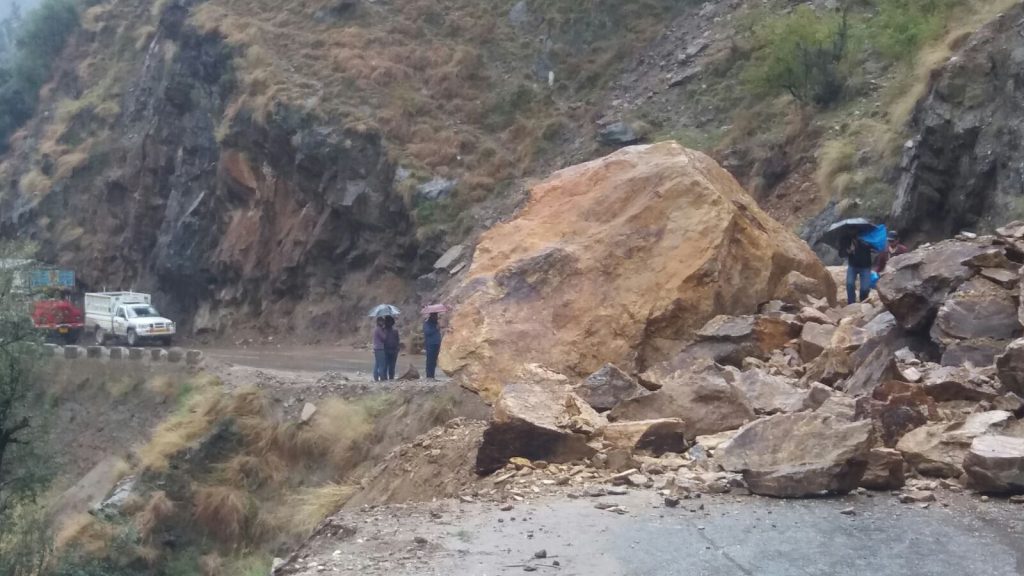
By Sakhra Riyaz
The landslide disaster that took place in Wayanad on July 30, and claimed the life of over 300 people, is a reminder of the severe impact natural disasters can have on a place, more so a tourist place. The landslide was caused due to “a cloudburst” which led to “the destruction of homes, with several people trapped under debris”. The main causes were “heavy rains” and “the unchecked development driven by tourism and quarrying” both of which had a negative impact on Wayanad’s sensitive environment.
The Wayanad disaster serves as a warning for Kashmir, because both regions share some similar environmental characteristics. In recent years, Kashmir has become more prone to heavy rains, landslides, and earthquakes creating conditions for a similar disaster if no preventive measures are taken.
One of the main reasons behind the weakening of Wayanad’s fragile environment was the indiscriminate tourism in recent years. Wayanad has become a “eco-tourism hotspot.” This has led to construction boom in the region. In fact, to handle the tourists new “resorts have mushroomed, roads have been constructed, tunnels have been dug and quarrying activities have been undertaken” without any consideration of the region’ s carrying capacity. This unplanned development has put huge pressure on the environment and also worsened the damage caused by the landslide.
A similar situation is arising in Kashmir Valley, which has always been a tourism hub. Since the abrogation of Article 370 in August 2019, the valley has witnessed a huge rush of visitors. Research shows that in the past two years, “more than 57 lakh visitors” have visited the valley. Data collected by the Jammu and Kashmir Tourism Department, shows that Kashmir saw “31.55 lakh tourists in 2023, up from 26.73 lakh in 2022 and 6.65 lakh in 2021”. Based on current trends, 2024 is shaping up to be the busiest year for tourism in Kashmir, with “over 15 lakh tourists” who have already visited Kashmir so far.
This large influx of tourists has put “immense pressure” on Kashmir’s natural resources, and led to an “overproduction of sewage, litter, loss of animal habitats, deforestation”. Moreover, Kashmir’s present infrastructure is not enough to cope with the number of tourists. So, new infrastructure is being planned, temporary accommodations are being built, roads and bridges are being constructed. This is being done largely in a hurry without any regard to local environment. We are witnessing large-scale deforestation and water pollution, which harms the delicate ecosystem.The loss of trees and plants significantly increases the risks of landslides and floods as the soil cannot hold excess water. This should therefore be a cause of a serious concern for both the people and the administration.
We can already see some of these negative impacts in Kashmir, with landslides and earthquakes becoming more common in the region. For instance, the Kishtwar landslide in July, triggered by a cloudburst, caused significant damage and disrupted daily life. Second, there have been several reports of earthquakes felt throughout the region in recent years, with “86 quakes of magnitudes up to 5.3:” taking place in 2024 alone.
Thus, to prevent natural disasters such as the Wayanad landslide from occurring in Kashmir, it is important to adopt sustainable infrastructure projects in the valley that take into consideration the fragile ecosystem. The development projects such as making new accommodations and roads must be carefully planned in a way to minimize environmental impact. The construction of new infrastructure needs to take account of the “current rainfall patterns.” There are already too many infrastructure projects in Kashmir for the region to handle.
The Wayanad disaster is a warning that unchecked and hurried development in vulnerable regions can have catastrophic consequences. Kashmir can learn from this tragedy and can take preventive steps to safeguard its environment and prevent similar disasters from occurring.
Views expressed in the article are the author’s own and do not necessarily represent the editorial stance of Kashmir Observer
- The author is a student at Georgetown University
Follow this link to join our WhatsApp group: Join Now
Be Part of Quality Journalism |
Quality journalism takes a lot of time, money and hard work to produce and despite all the hardships we still do it. Our reporters and editors are working overtime in Kashmir and beyond to cover what you care about, break big stories, and expose injustices that can change lives. Today more people are reading Kashmir Observer than ever, but only a handful are paying while advertising revenues are falling fast. |
| ACT NOW |
| MONTHLY | Rs 100 | |
| YEARLY | Rs 1000 | |
| LIFETIME | Rs 10000 | |













